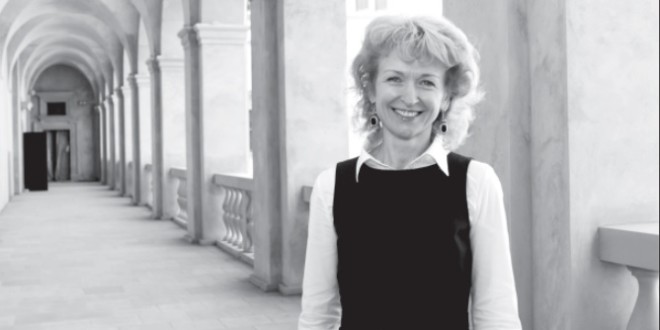BY JŪRATĖ MIČIULIENĖ
![]()
Historian Jolanta Karpavičienė states that women surrounding Lithuania’s rulers, from the time of Mindaugas, lived a more active public life than Slavic princesses shut up in their ivory towers.—
JOLANTA KARPAVIČIENĖ, Assistant director of the National Museum Palace of the Grand Dukes of Lithuania in Vilnius, said that historical sources, as well as archaeological finds, tell of Lithuania’s rulers’ traditions and way of life and testify to our long-time inclusion in Western civilization.
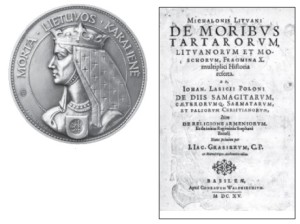
“The active life of the women of the court was very different from Eastern customs. Following the requirements of Western etiquette, Lithuanian women participated in public receptions and feasts honoring foreign guests, accepted gifts from foreign emissaries, and themselves made gifts to foreign diplomats.”
Historians, studying family structure (since the small family structure dominated in Lithuania, not the communal structure of the Eastern Slavs), and its social, cultural and economic matters, observe in the Lithuanian woman’s situation the same European context as in other Western lands. “I can confidently say that the Lithuanian woman has from olden times been a European,” said Karpavičienė. “However, we cannot altogether dismiss the Byzantine cultural influence, especially since one active woman (Jogaila’s mother, princess Julijona of Tver), attempted to convert Lithuania to Orthodoxy during the fourteenth century. Just the same, Western culture took hold in Lithuania, especially from the end of the fourteenth century, when Baptism into the Roman Catholic faith was accepted. Many phenomena during that time acquired their specific characteristics. Foreign researchers note that our women’s situation, in some aspects, could be considered better than that of Western Europe’s women.”
Western Standards
“There is very little concrete information about Queen Morta and King Mindaugas, but historical sources mention that Morta participated in a reception for the Grand Master of the Livonian Order. This initial act by the Queen later became a standard rule,” said Karpavičienė.
“During communications with the Grand Master of the Livonian Order in an effort to obtain a crown for himself and his wife, Mindaugas was the first to establish certain standards of Western etiquette. Lithuania, in this aspect, was very different from Slavic lands—Moscow and other Russian principalities and dukedoms. Our women did not sit closed up in their towers, as did the princesses in the Eastern lands,” explained Karpavičienė.
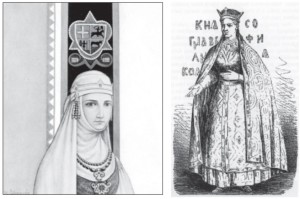
Mykolas Lietuvis wrote of the differences between Lithuanian and Slavic women. “Scholars have determined the identity and origin of this individual (who should more correctly be called Michalonas Lietuvis), a petty noble from Vilnius named Vaclovas Mikalojaitis. During the middle of the sixteenth century, he wrote an interesting work about the customs of the Lithuanians, Tartars and Muscovites (De Moribus Tartarorum, Lituanorum et Moschorum). Unfortunately, only fragments of this work remain. In comparing their women, he stated that our women lived differently: they actively participated in public life, having all the same rights as men—ruling estates, towns and villages, attending men’s gatherings, riding on horseback. But Russian princesses were barred from any kind of association with foreign guests. Such was the established order in Russia.”
With this in mind, we might recall that, even during Soviet times in the twentieth century, Moscow’s Kremlin leaders never allowed their wives to be seen in public, the exception being Mikhail Gorbachev.
Karpavičienė talked about the life of Vytautas’s daughter Sofija—the only one of Grand Duke Vytautas’s children whose life is comparatively well-known. “Sofija lived about thirty-five years in Moscow, married to Grand Duke Vasily I. According to the customs prevalent at that time and place, we could say that she was practically unseen. But when she became a widow, she began a very active participation in public life. With her son Vasily, the heir apparent, then a young child, she visited Lithuania and acknowledged the protection of her father. Thus she fulfilled her late husband’s last will (Grand Duke Vasily I’s will and testament named his father-in-law, Vytautas, as his son’s protector, demonstrating Lithuania’s political supremacy over the still weak and splintered Grand Duchy of Muscovy.) Sofija actively took part in a reform of laws in Muscovy, and saw to their implementation. She took care of her own funds, and in her eighties, led Moscow’s defense against the Tartars. It is interesting to note that even Russian historians consider this the work of a Western woman in a Russian environment. For them, this is something unaccustomed.”
Gloves for the Grand Duchess
“Women’s participation in public life became especially intense during the time of Vytautas,” continued Karpavičienė. As a ruler, Vytautas implemented precise reforms—implanting a Western estate structure in Lithuania. At first, this was a pragmatic interest to bring order to the estates’ administration system as well as to the entire country’s administration. Thus arose the estate’s marshal, treasurer and other officials and, later,—the country’s officials. Still other duties and functions arose, answering the need for work upon manors and estates. Beginning in the fifteenth century, we find information about cupbearers, waiters, cooks, breadslicers, and hunters. Eventually these functions, parceled out amongst Lithuania’s noblemen, became only titles of honor, but they were the source of Lithuania’s table culture. The work required for the system was fulfilled by palace servants: wine-makers, tailors, chambermaids. A much narrower version of this of system later made its way into the manors of the Grand Dukes. A representative and integral part of this culture was the exchange of gifts, which were often received by the women. For example, we have some interesting information about the attentive regard shown by foreigners to Grand Duchess Ona. The Grand Master of the Teutonic Order sent her a clavichord (the earliest mention in Europe of this fortepiano prototype) and a small portable organ. Ona received ornaments, Rhine wine, grapes, spices, rich fabrics encrusted with pearls, and silk gloves (then considered a royal attribute; these accessories could cost as much as a fine horse). Ona in turn sent costly gifts to the Grand Master and to the rulers of other lands and their wives. It is interesting to note that, when Jogaila and Jadvyga’s first child Bonifacija was born, Vytautas and Ona sent the gift of a silver cradle.” According to Karpavičienė, some rules and requirements of diplomatic etiquette, which began in Vytautas’s times, are still alive today. “In early times, the leaders’ strength was often demonstrated through their travels. In 1400, a group of more than four hundred horsemen escorted Vytautas’s wife to visit the Teutonic Order’s lands,” added the historian.
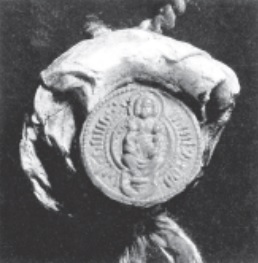
Her Own Estate
“From Vytautas’s time at the end of the fourteenth century, plentiful information indicates that women’s participation in public and community affairs was not a local, but a general, phenomenon. An important sign of Grand Duchess Ona’s political independence is her personal seal on documents.
In later times, Lithuanian female rulers’ expression in the political sphere became a necessary tradition. This became especially apparent at the end of the fifteenth century, when Alekandras Jogailaitis was elected Grand Duke of Lithuania (and later, King of Poland), and married the Orthodox daughter of Muscovy’s Grand Duke Ivan III, Elena.” Karpavičienė further notes, “It was during her time that a separate court was formed in the manor of the Grand Duchess, serving her needs through a group of about one hundred individuals, each with a different function. Grand Duke Aleksandras was served by about a thousand individuals. The household of Barbora Radvilaitė, wife of Grand Duke Žygimantas Augustas, comprised some two hundred persons.”
According to Karpavičienė, the Palace of the Grand Dukes of Lithuania in Vilnius had a separate wing, which historians call the women’s area. “The Grand Duchess lived here with her courtiers. When an envoy arrived to visit the ruler, he would often ask for an audience with his wife. This evolved into a tradition. According to historical protocol, persons wanting to visit the ruler’s wife would be required to pass through several anterooms, where the envoy and his escort were checked for security, the same as they would have been before seeing the ruler,” commented Karpavičienė, disclosing lesser-known facts about the Palace. “We have written sources telling us whether it was possible to visit the valdovė (ruler’s wife), or not. This confirms that our women took an active part in palace life.” The historian said that when the new museum opens to visitors, people will be able to see the valdovė’s audience chamber, office and personal apartments.
Wife’s Dowry— Not for Husband’s Debts
Karpavičienė says that Lithuanian women’s historical importance determined that they were subjects of inheritance rights and wealth relationships, and this became the groundwork for their expression in public life.
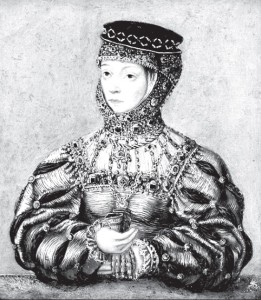
“As an example, if a maiden never hurt her father, never raised her hand against him or against her mother (it is written this way in the sixteenth century Lithuanian Statute), her parents could not withhold her dowry. The dowry was considered a compulsory obligation of the parents, in which the rights of inheritance were implemented,” said the historian. “The formal dowry system formed during the fifteenth century and was well-established by the sixteenth. When a woman was given a dowry, the details of the agreement had to be documented in writing, very similar to a modern prenuptial agreement. The wife’s dowry had to be guaranteed by her husband’s wealth, making the wife a legal party to the agreement. As such, although she was the dowry’s formal owner, she did not have the independent right to dispose of it. But her husband’s rights in the dowry were also restricted: he was not able to use any of it to pay his own debts, unless he had his wife’s consent. The wife was necessarily obliged to pay attention to the use and administration of wealth. For example, extant letters of sixteenth century Lithuanian nobles show that their women understood economic issues very well, and managed them independently. The ledgers of court cases recorded in the Lithuanian Metrica include much information about some superactive bajorės (female petty nobility), who suspecting the peasants of neighboring estates of stealing their crops, organized attacks on these estates, even personally taking part in them.”
Living Separately
Karpavičienė noted that the ruler and his wife had separate private chambers, where they passed the time. “Their lives flowed in different channels. Each had their own duties and occupations. But if they loved each other, they met more frequently. It is well known, that Žygimantas Augustas liked to have breakfast with Barbora, and to spend time in her company.”
“It may sometimes seem that the Grand Duchesses never did anything but spend their time embroidering in their drawing rooms, but in fact, they had many concerns. At least several hours a day were taken up by correspondence—reading, writing or dictating various types of letters or documents to secretaries. They also looked after courtiers’ careers, estate matters, or wealth administration. Grand Duke Aleksandras’s widow, Elena, had twenty-two domains—Birštonas, Rokiškis, Anykščiai, and other towns, villages and estates, left to her by her husband. We can refer to Elena as the first literate woman in Lithuania’s history. Of extant records, we have seven of her letters and a few score other documents carrying her seal. And just a bit later, the correspondence and clerical work of Lithuania’s Grand Duchess and Poland’s Queen, Bona Sforza, can be counted in the hundreds.”
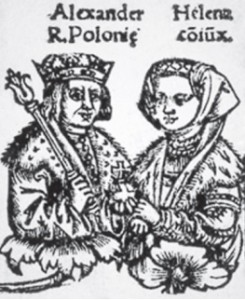
Requirements of national representation, concerns of the estate, and the consideration of economic matters, all combined to draw the ruling women and nobility into the public sphere. According to Karpavičienė, these women paid close attention to their protégés, taking care to advance their careers, striving to place a favored employee in her husband’s household, which would be a step higher on the career ladder. Such informal ties are known by scholars as patron-client relationships, and they emphasize that women were no exception. It is known, for example, that the vaivadienė (governor’s wife) of Vilnius, Elžbieta Šidlovecka Radvila, who had been cared for by a physician named Rupertas Finkas, was so impressed by him that, through her intervention, he was promoted to care for the governor and, later, for the ruler. Several employees of Duchess Kotryna Tenčinska Radvila’s estates, on her recommendation, were employed by her husband or her son.
Styles Spread From the Palace
The rulers’ domination of public life could not fail to influence various other layers of society. “The estate model moved from the ruler’s court to the nobility”—said Karpavičienė. “By the sixteenth century, the women of the Radvila, Chodkevičius, Ostrogiškis, Sapiega, and other noble families behaved as did the valdovės. It is known that Lithuania’s noblewomen owned personal estates, employing some sixty or more persons and officers—the maršalka (marshal), attending to etiquette matters, a chancellor and secretaries. These individuals attended to clerical matters. Additional employees took care of security, medicine, music, spiritual matters, and service personnel such as chambermaids, cooks and laundry workers. Some important representative roles were even played by ladies-in-waiting.
While employed at the estates of the Grand Duke, girls were able to gain an education, just as in the rest of Europe. “We know of instances when noblewomen tried to install their daughters in Grand Duchess Elena’s household. That was an honored position, and from the court spread fashions in clothing, etiquette, table manners and so forth,” explained Karpavi- čienė. “We have concrete information about efforts made by Barbora Radvilaitė and other female rulers to find fitting and appropriate marriage prospects for their protégés. While today this may sound like a movie script, it was true. This was just another example of the active Lithuanian palace women.”
Karpavičienė said that women could participate in political life informally—through personal contacts and patronage. “That was inherent in all of Europe. For example, there are written sources showing Queen Morta’s activities and her influence on her husband, King Mindaugas. One of these sources tells us that Mindaugas’s nephew Treniota, the ruler of Žemaitija (Samogitia), in order to obtain benevolence from the king, tried to hide his treacherous plans from Queen Morta, who he knew had great influence on her husband. Historians refer to this type as a ‘persuasive woman,’ noting that in Lithuanian history there had been more than a few,” stressed Karpavičienė. (As we know from history, Treniota conspired with Daumantas, the Duke of Nalšia, in the assassination of Mindaugas and his two sons in 1263.)
Widows—An Exception
In theory, women did not have rights for direct participation in political life, or in ruling the state, or membership in the Seimas (Parliament).
Karpavičienė stressed that from this point of view, we were not different from the rest of Europe. “But in the case of Lithuania, we have a rare exception. Written sources show that in the sixteenth century, regulations governing warfare were prepared by the Ponų Taryba (Council of Lords). These regulations were ratified by the Seimas in Vilnius, which included dukes, lords, petty nobility and their widows. That should not be surprising, since female nobility ruled their own domains, and depending on the holdings’ size, they had to provide a specific number of mounted troops. For example, the active Ona Radvilaitė- Kiškienė, one of the wealthiest women of the sixteenth century, provided up to 400 riders and 150 infantry. As a practical matter, the owner of so large a domain would necessarily be a subject of political relations,” commented Karpavi- Cienė.
Though women’s activities cannot be denied, in Vilnius or Kaunas there were no women carrying on the work of bürgermeisters, assessors, or city council heads (burmistras, tarėjas, vaitas). Such was not allowed, even unimaginable. “But women married to a city’s officers are always mentioned in sources, in consideration of their spouse’s status, as burmistrienė, ta-rėjienė, vaitienė,” noted Karpavičienė. “Scholars stress that a woman’s status in the society of those times was defined by two things—gender and her father’s or husband’s social status.”
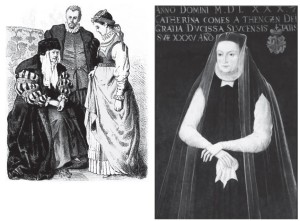
Karpavičienė said she has discovered some interesting facts. “If a woman was assaulted, and the decision of a court had to be grounded on the severity or nature of her hurts, the victim was sent to the vaitienė or burmistrienė, so that she could inspect the wounds, which might not be appropriate for a man to see. The city officer’s wife’s findings were put into writing and sent to the judges.”
Cloakroom Politics
“If the ruling couple was joined by ties of love, she could undoubtedly influence her husband”, said Karpavičienė. “It is well-known that Barbora Radvilaitė and Ona Vytautienė had such an effect on their spouses. For example, the Grand Master of the Teutonic Order sent a letter to Ona, thanking her for her help in a matter beneficial to the Order.
Barbora Radvilaitė’s correspondence with her brother, Mikalojus Radvila ‘the Red,’ contains hints and guidance on how to approach her husband in order to obtain a favorable decision. Things that, to us, appear to be ‘cloakroom’ or ‘lobby’ politics, were also a part of political culture in those days. Through such informal ties, women also became active individuals. It is obvious that they dedicated a good deal of time to it.”
 DRAUGAS NEWS Lithuanian World Wide News in English
DRAUGAS NEWS Lithuanian World Wide News in English
